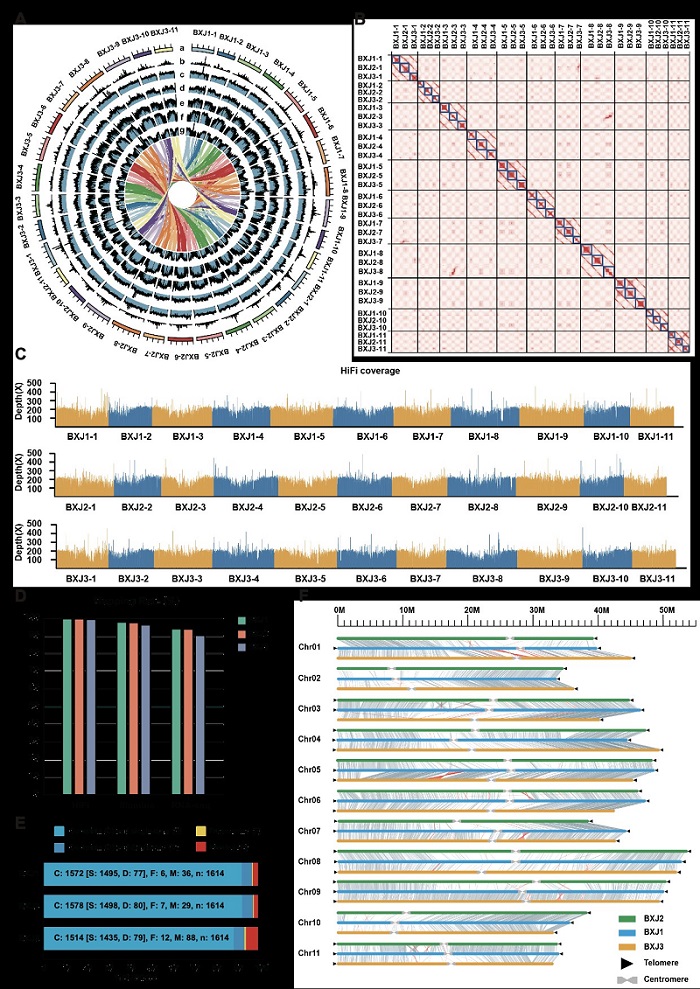

Banana is one of the most important crops of the world. The demand for cultivated bananas continues to grow; however, their production is greatly affected by a complex of biotic and abiotic stresses. For instance, banana yields are severely threatened by the disease fusarium wilt, which is caused by the fungus Fusarium oxysporum f. sp. cubense. Therefore, breeding new banana cultivars with improved traits, particularly genetic resistance to a wide and diverse group of pathogens, is crucial for future banana production; and a high-quality banana genome would no doubt facilitate such genetic manipulation.
Cavendish-type bananas, which have a monospecific Musa acuminata origin (AAA), account for around half of the global banana production, thereby are of great significance for human societies. However, until now, the high-quality haplotype-resolved reference genome was still undecoded for banana cultivars. In this study, the telomere-to-telomere (T2T) and haplotype-resolved reference genome of ‘Baxijiao’ (Cavendish) was reported. This reference genome consists of three haploid assemblies, the sizes of which were estimated to be 477.16 Mb, 477.18 Mb, and 469.57 Mb, respectively. Although with monospecific origins, the three haploid assemblies showed great differences with low levels of sequence collinearity. Several large reciprocal translocations were identified among chromosomes 1, 4 and 7. An expansion of gene families that might affect fruit quality and aroma was detected, such as those belonging to sucrose/disaccharide/oligosaccharide catabolic processes, sucrose metabolic process, starch metabolic process, and aromatic compound biosynthetic process. Besides, an expansion of gene families related to anther and pollen development was observed, which could be associated with parthenocarpy and sterility of the Cavendish cultivar. Finally, much fewer resistance genes were identified in ‘Baxijiao’ than in M. acuminata, particularly in the gene clusters in chromosomes 3 and 10, providing potential targets to explore for molecular analysis of disease resistance in banana. This T2T haplotype-resolved reference genome will thus be a valuable genetic resource for biological studies, molecular breeding and genetic improvement of banana.
The article “Telomere-to-telomere haplotype-resolved reference genome reveals subgenome divergence and disease resistance in triploid Cavendish banana” has been published in Horticulture Research. This work was supported by the National Natural Science Foundation of China and the Strategic Priority Research Program of Chinese Academy of Sciences. For further information, please refer to: https://doi.org/10.1093/hr/uhad153

Figure 1. Overview of the Cavendish reference genome.

